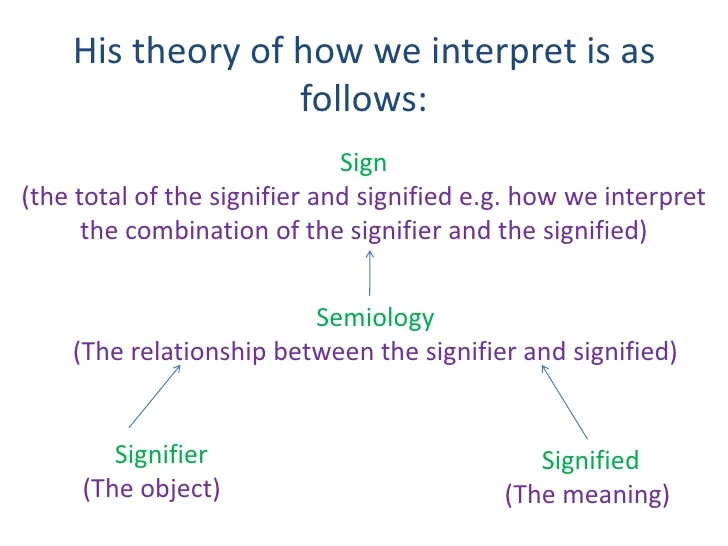Semiotics involves our actions and thoughts which we do automatically without thinking. We are controlled by a complex set of cultural messages and conventions which are dependent upon our ability to interpret them instinctively and instantly. An example of this is when we see the different colors in a traffic light, and we instantly know how to react to it. The traffic light signs are an example of the way a cultural convention is established over a long period of time, which we learn as children without realizing. We know that the red light means stop and this requires a deal of unconscious cultural knowledge to understand the meaning.
Barthes communicates that everyone responds to semiotics because everyone is always unconsciously interpreting the meaning of the different signs around them. The signs do not always have to be visual and can involve aural and sonic signs such as sounds of police sirens which automatically alerts us to the presence of a nearby police car.
Semiotics in Media
In media, the audience will look for signs to aid them in their interpretation of the narrative. For instance, in a TV advertisement there may be signs that allow the audience to realize and conclude what is being advertised and associate the advert with the brand.
There are three types of signs in the study of semiotics which involves:
Iconic Signs - This is where icons serve as signs where the meaning is based on the similarity of appearance.
Indexical Signs - This is where the signs have a cause and effect relationship between the sign and the meaning of the sign and there is a direct link between the two.
Symbolical Signs - Signs that are symbolic will have an arbitrary or conventional link.
In a similar way, I will present my football boots in the advertisement which will serve as a signifier. I will focus on the football boots which will communicate to the audience that this is what is being advertised. Also, the props used in my advert such as the football and goalposts will all combine to serve as a signifier which the audience will interpret and realise that it is a sports adverts. This will aid them and lead them to the recognition of the football boots that will be promoted through the advert.

No comments:
Post a Comment